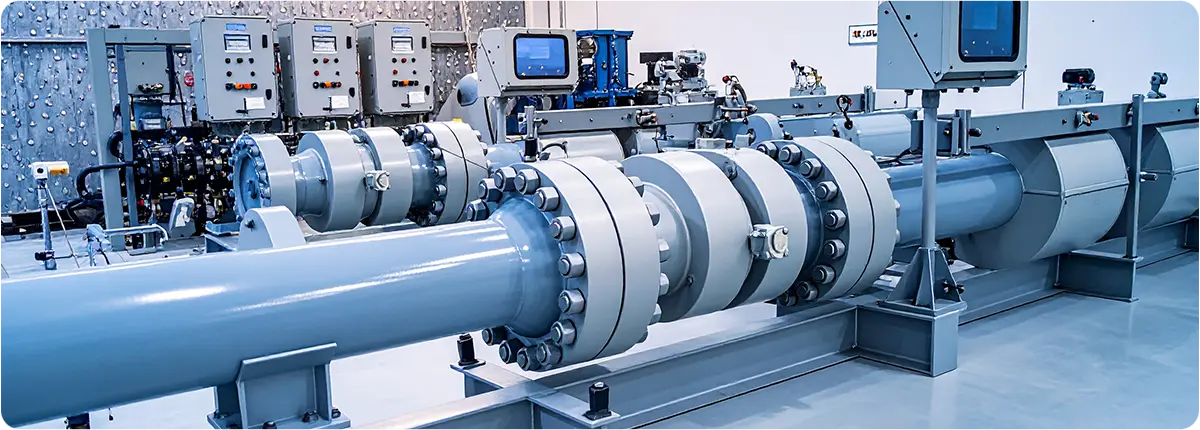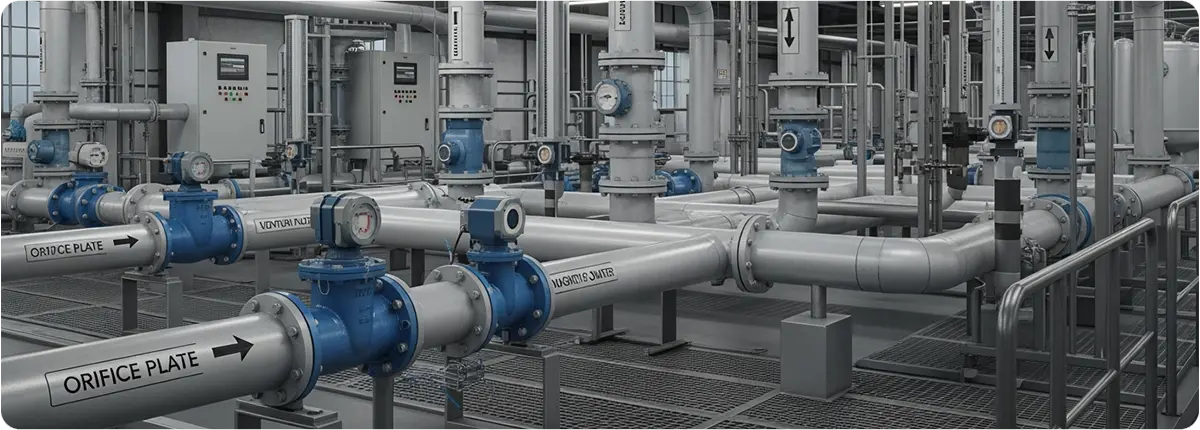Ultrasonic flowmeters are modern instruments that measure flow using the propagation of sound waves. They are highly durable due to their non-intrusive design, require minimal maintenance, and can measure liquids, gases, and multiphase flows. They are widely used in water management, energy, petrochemical, food, and pharmaceutical industries.

WORKING PRINCIPLE
Ultrasonic flowmeters operate primarily using two methods: transit-time difference and Doppler effect.
• Transit-time method: Measures the difference in travel time between ultrasonic signals sent with and against the flow. This difference is proportional to flow velocity.
Basic equation:
v = (Δt · c²) / (2 · L · cosθ)
v: fluid velocity, Δt: time difference, c: speed of sound, L: distance between sensors, θ: angle of the signal
• Doppler method: Measures the frequency shift of sound waves reflected from particles or bubbles in the fluid. The shift is directly proportional to flow velocity.
STRUCTURAL FEATURES
- Sensors: Mounted externally (clamp-on) or inserted into the pipe
- Measurement range: from very low to high flow rates
- Outputs: Pulse, 4-20 mA, HART, Profibus, Modbus
- Data integration: Digital display and SCADA compatibility
ADVANTAGES AND LIMITATIONS
Advantages:
- Non-intrusive measurement (clamp-on)
- No moving parts, low maintenance
- High accuracy (±0.5% – ±1)
- Suitable for liquids, gases, and multiphase flows
Limitations:
- Accuracy affected by fluid temperature, viscosity, and pipe material
- Performance decreases in non-homogeneous flows
- Doppler method requires particles or bubbles in the fluid
APPLICATION AREAS
- Water and wastewater monitoring
- Measurement in oil and gas pipelines
- Cooling water control in power plants
- Hygienic flow measurement in food and beverage industry
- Process control in pharmaceutical production
STANDARDS AND CALIBRATION
- ISO 6416: Standard for ultrasonic flow measurement
- AGA reports: Gas measurement standards
- ATEX-certified models for explosive environments
- Regular calibration required to maintain accuracy
CONCLUSION
Ultrasonic flowmeters have become essential in modern industries thanks to their non-intrusive design, accuracy, and low maintenance requirements. Their ability to integrate with digital communication protocols makes them a reliable choice for process automation and optimization.
